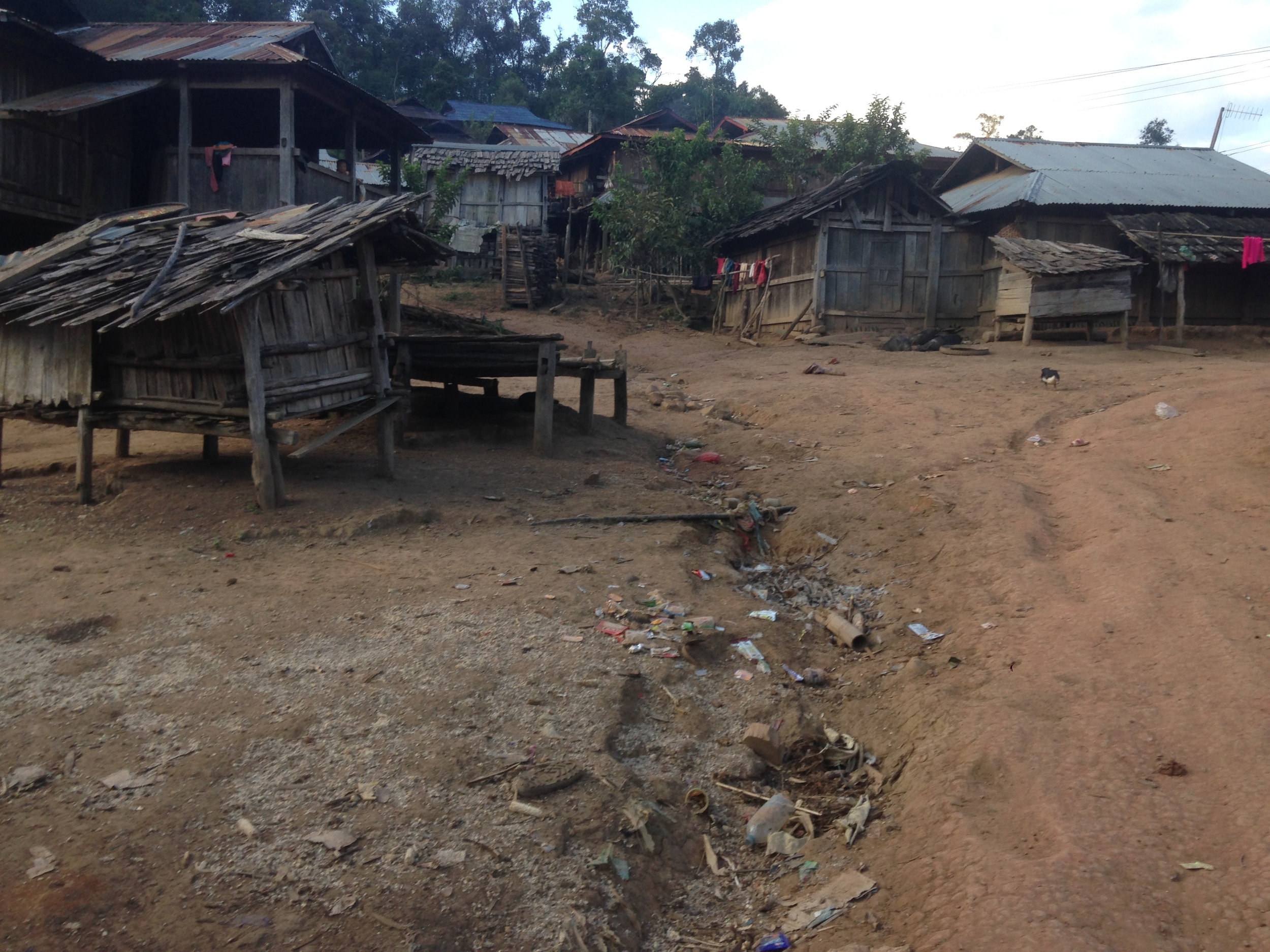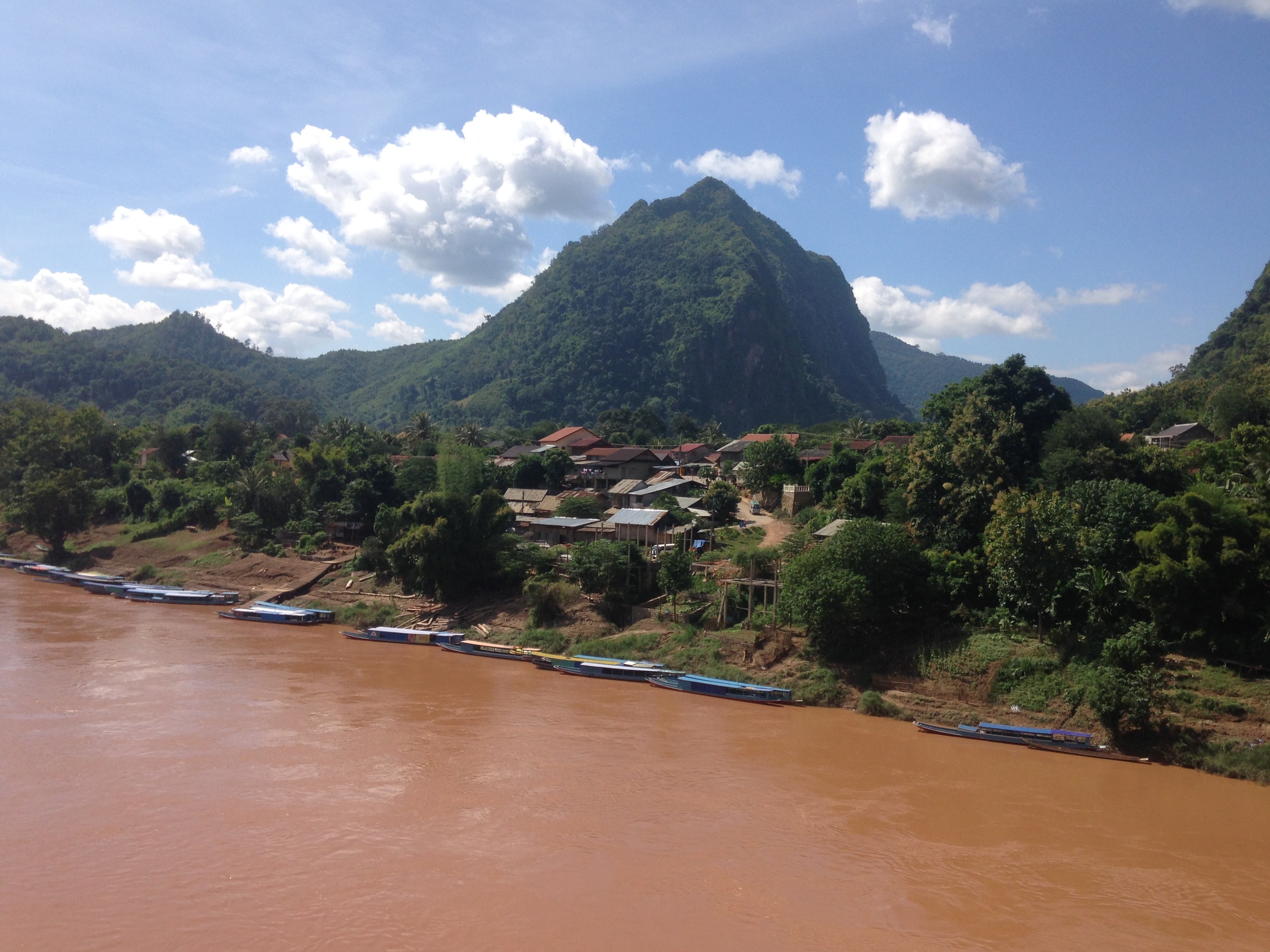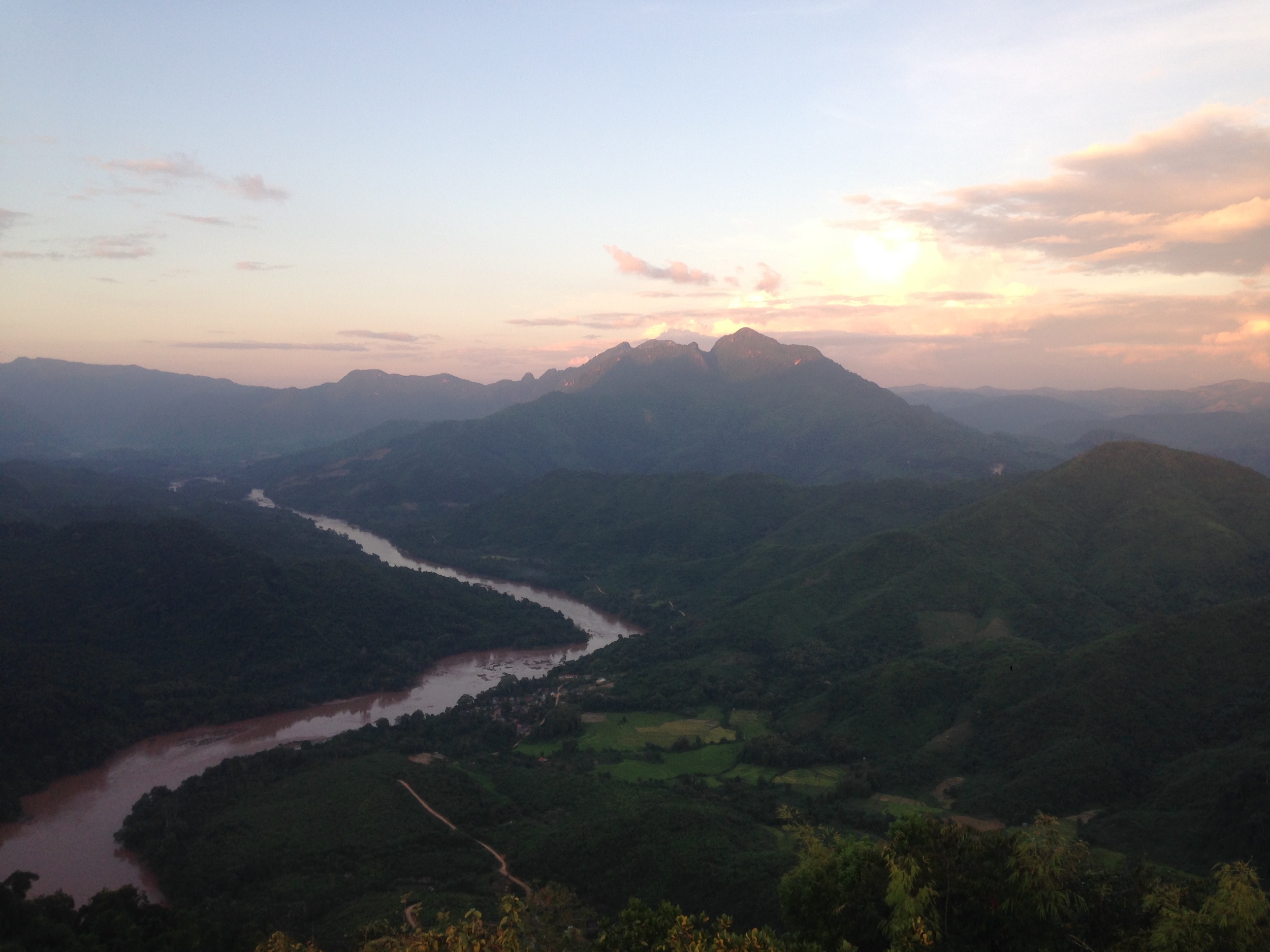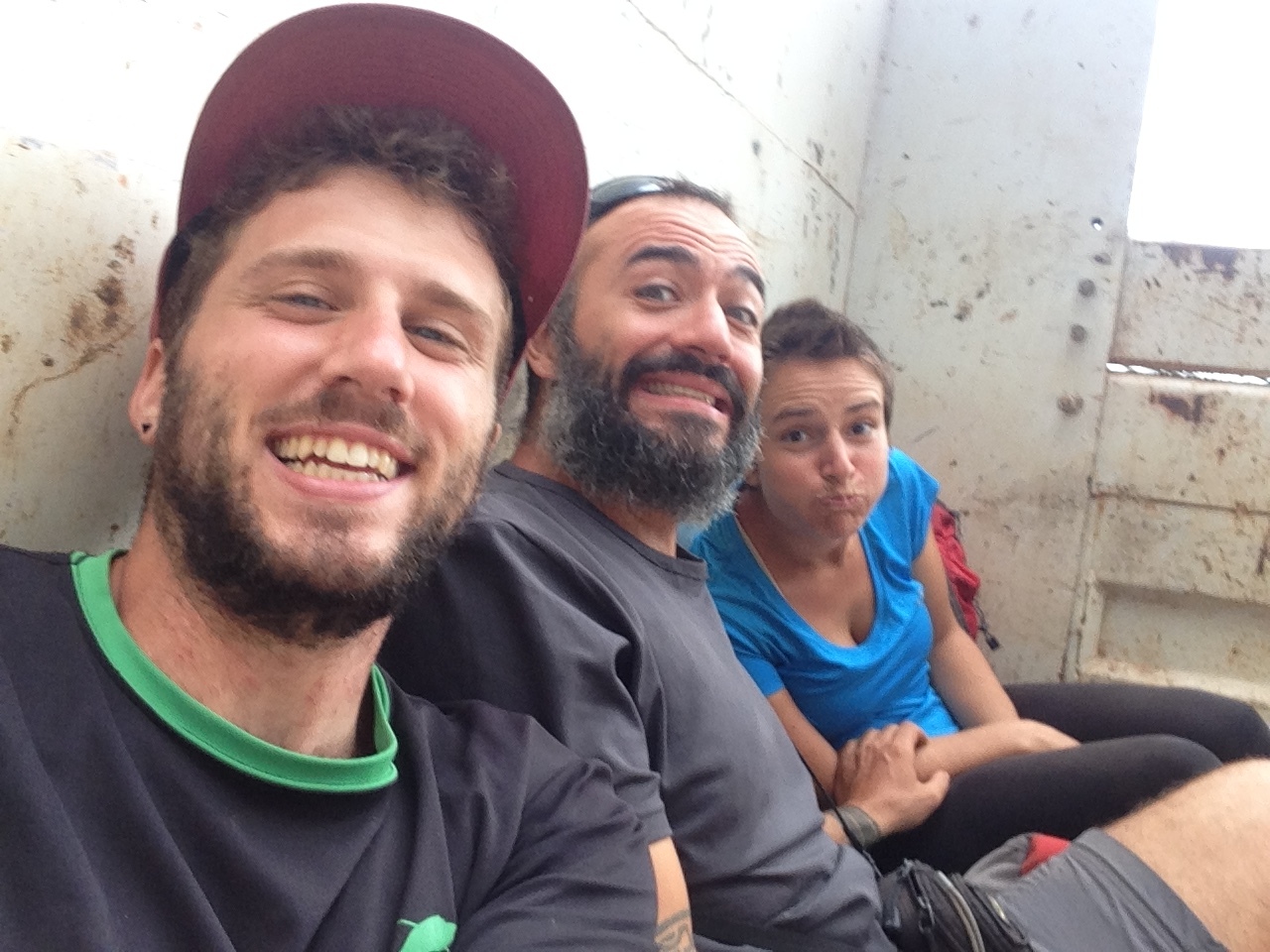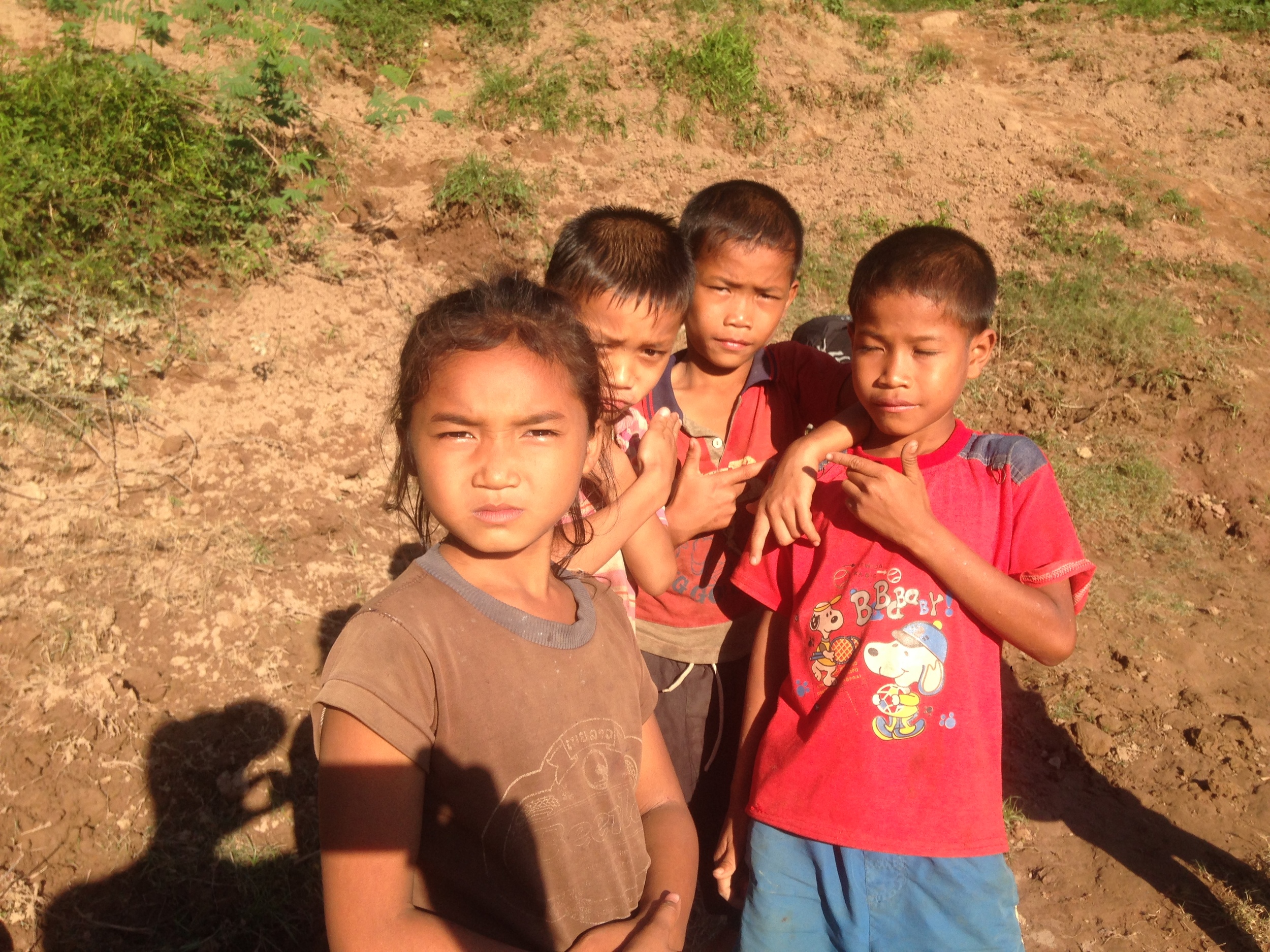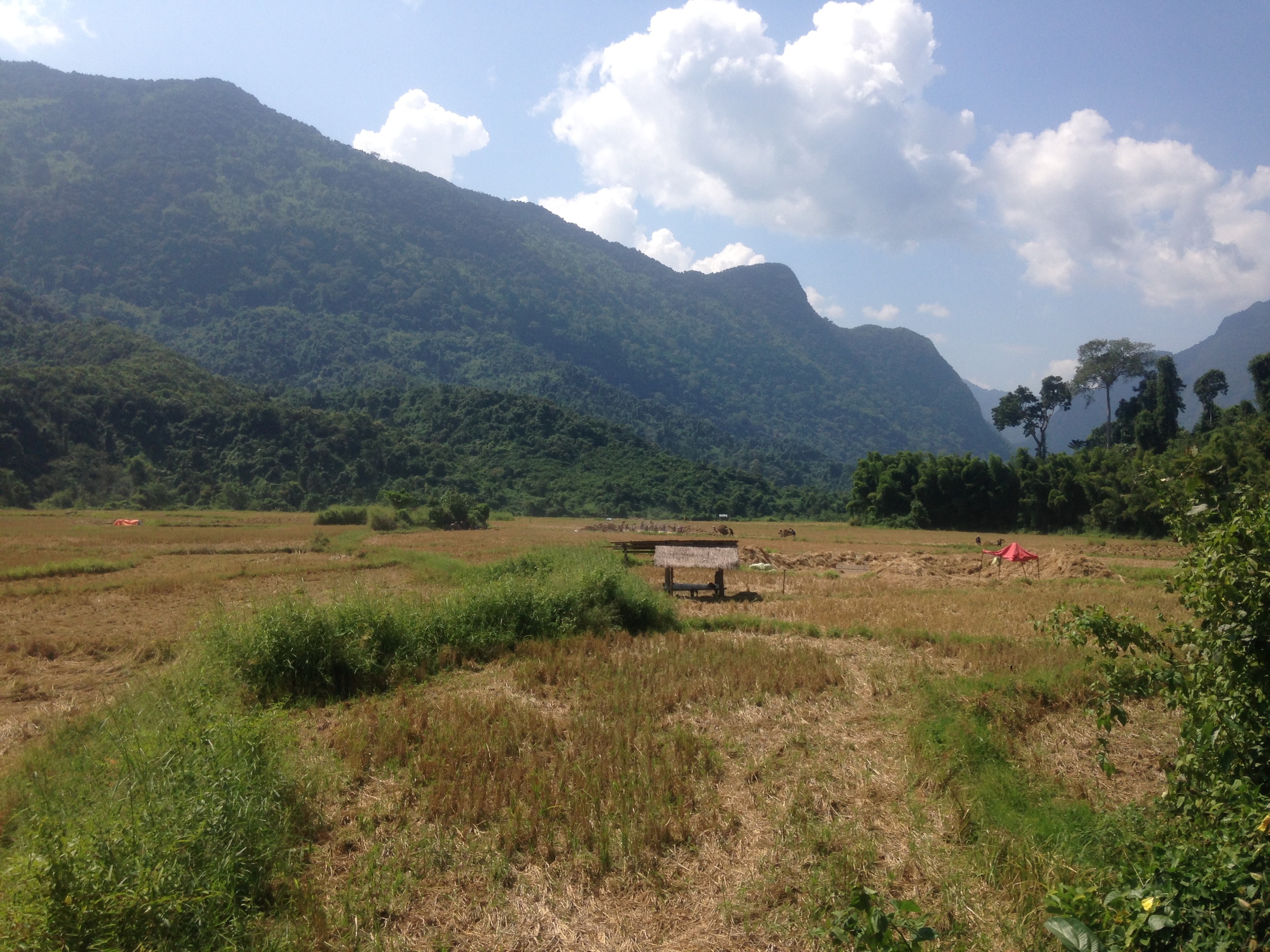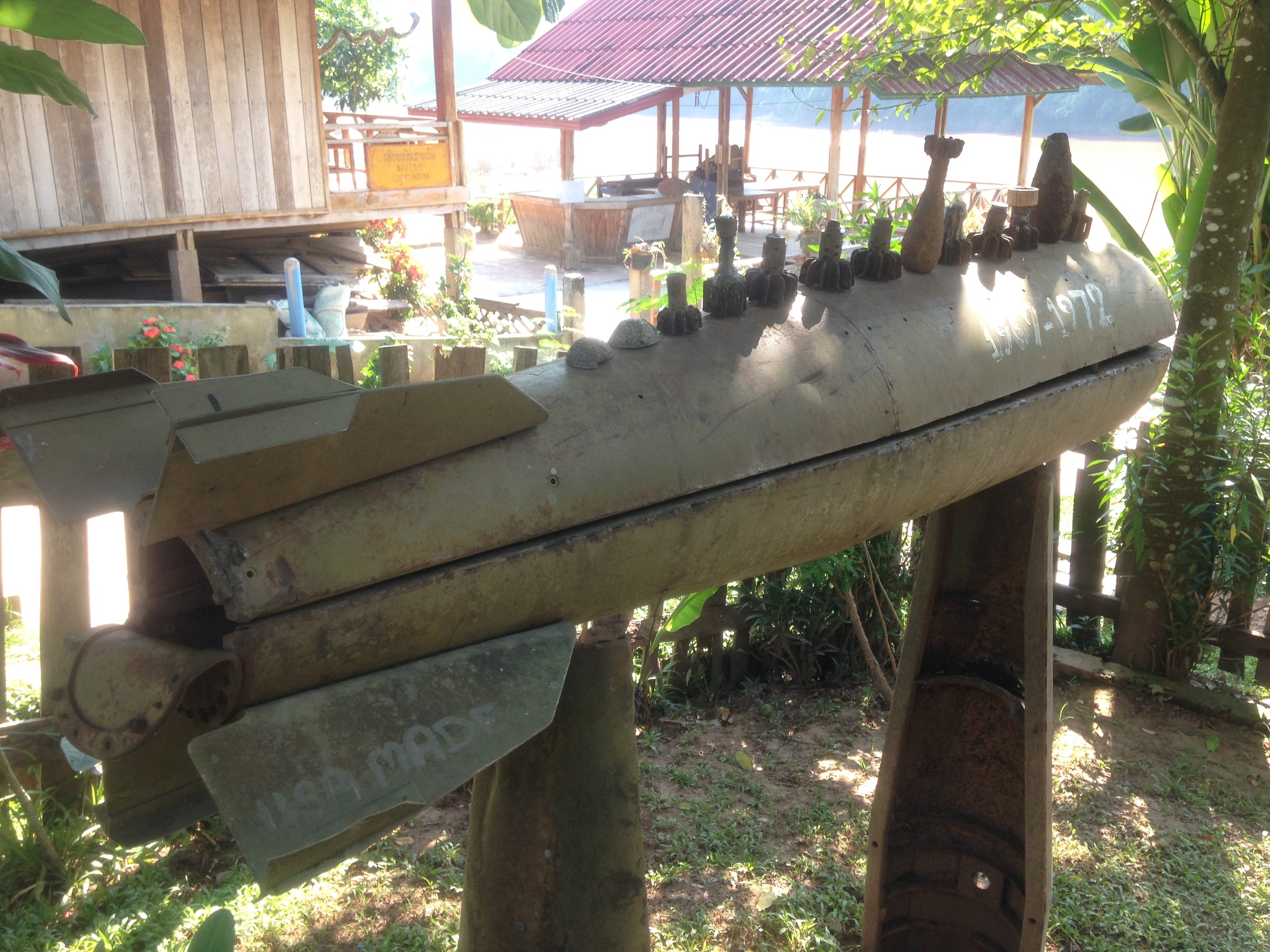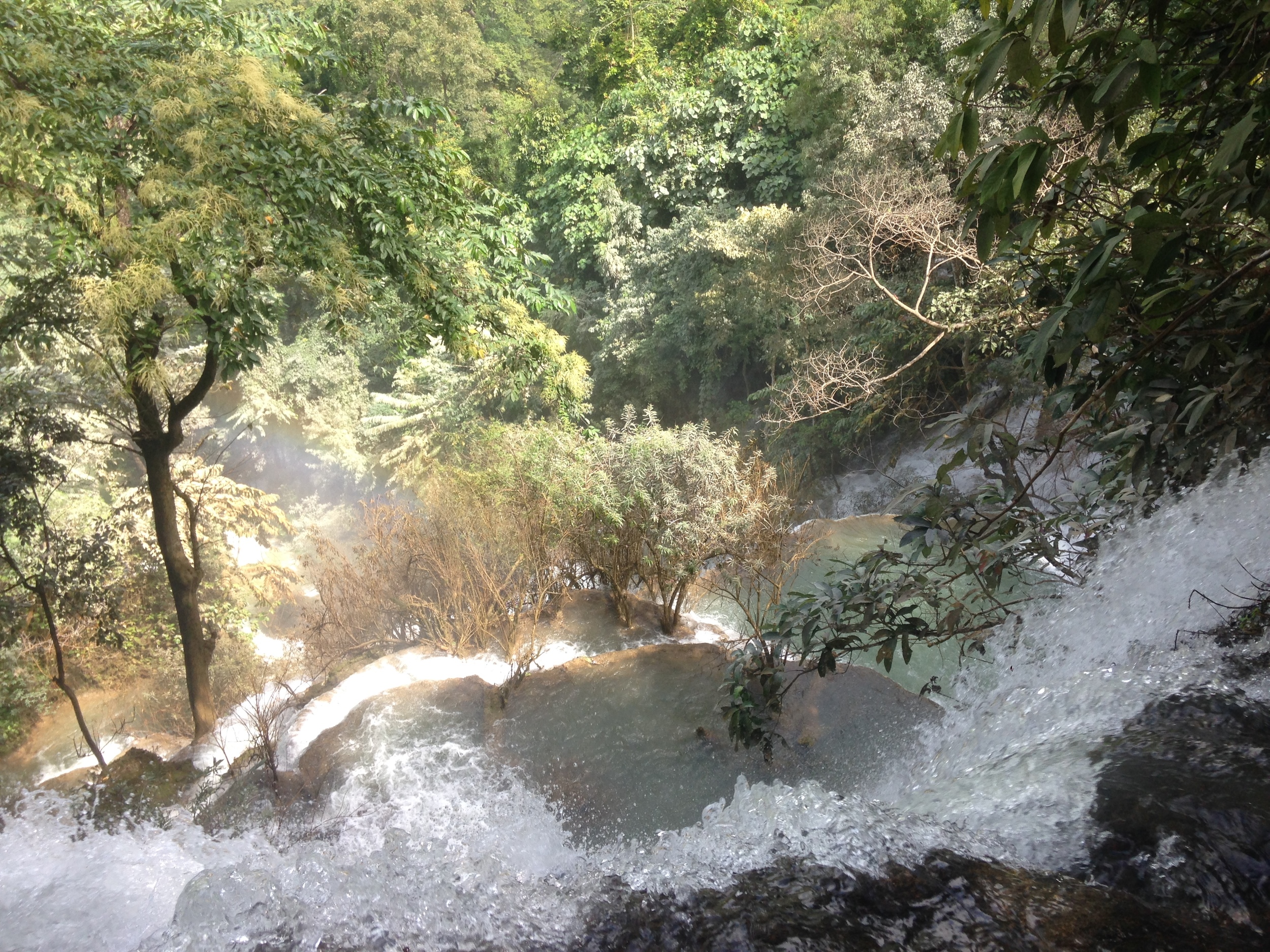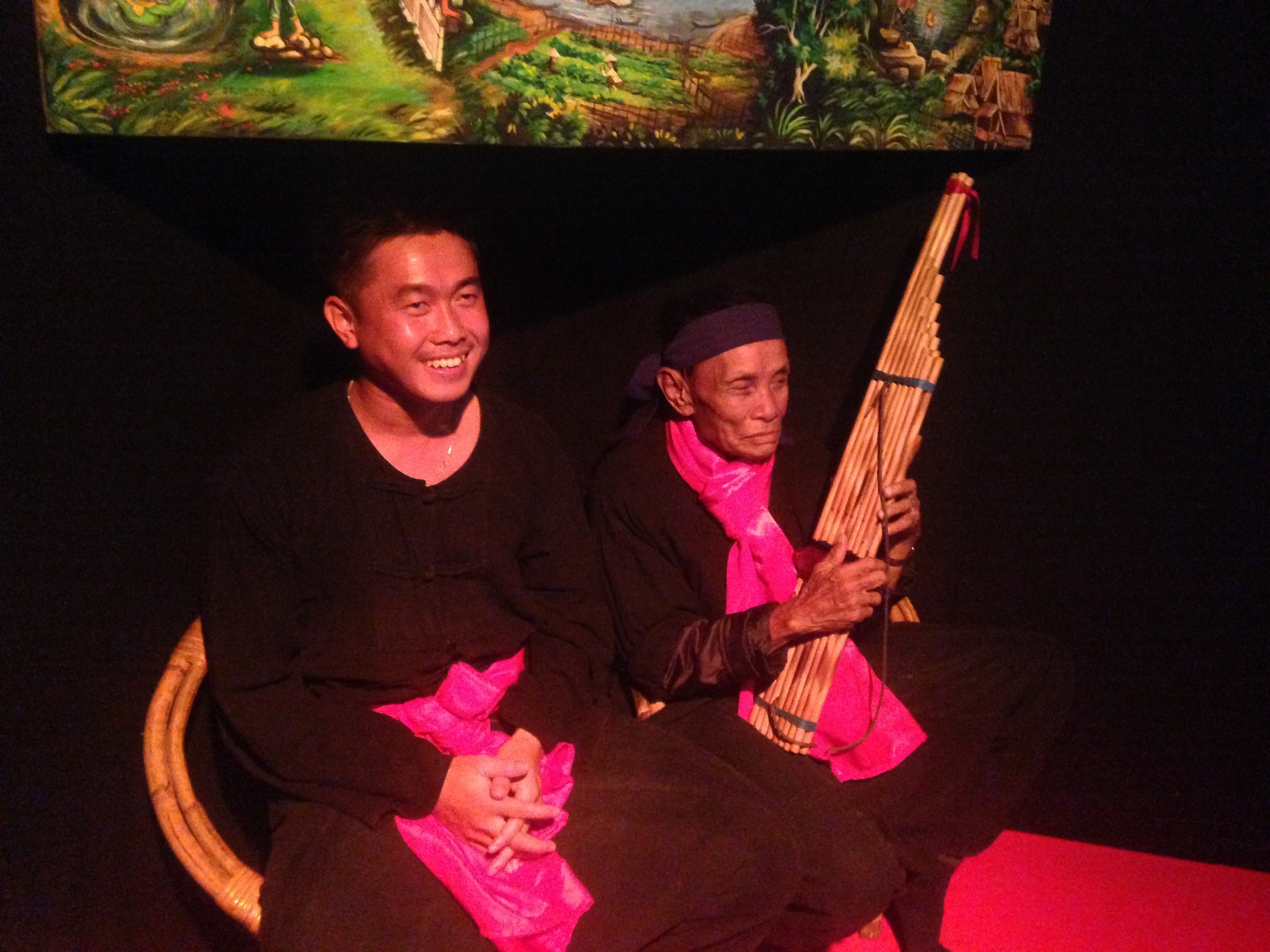Laos from South to North
I crossed the border of Laos on a bus from Hue, Vietnam. After waking up early to catch the bus, I received a long break as the bus pulled over just five minutes after departure for gas, and the loading of cargo (fruit, vegetables, birds, and other stuff) for over an hour. Fully loaded up, I had a fairly enjoyable ride in my tiny bunk bed. As we crossed the border I was left behind as the bus pulled forward to bring the other passengers up to a restaurant.
Loading up the bus...
...takes a long time.
I had to pay $40 to get my Laos visa, and as they wouldn’t accept my non-pristine USD, I had to exchange them at a nearby bank. Without any other difficulties I entered Laos with my visa, had my lunch bought for me by a kind elderly man, and was on my way south to Si Phan Don, a group of islands surrounded by the Mekong River along the border of Laos and Cambodia.
Si Phan Don
Stepping ashore on Don Det, the most popular island for backpackers, I immediately knew I was in the right place for a bit of relaxation after my whirlwind tour of Hong Kong and Vietnam. The majority of shopkeepers, restaurant owners, and guesthouse staff spend the day lying on their backs until the arrival of a customer. There is no rush, no place where people have to be, and honestly not much to do anyway. It is a perfect place to do some writing, finish and start a new book, and enjoy the passing of fishing boats as they set and check their traps each morning and night.
A fisherman cruises home at sunset
Khon Phapheng Falls
Nearby Don Khone island
Fishing
After a rejuvenating stop in Don Det, the time to truly explore Laos was at hand.
The Bolaven Plateau to Luang Prabang
The Bolaven Plateau is an elevated region to the east of Pakse. It is famous for its coffee and a number of beautiful waterfalls. I am not one for coffee, but I am always up for a motorbike adventure to see waterfalls.
Tad Fane waterfall over 120 meters high
Tad Hang waterfall in the village of Tad Lo
Tad Yuang
Young monks who helped me pray at a local temple
After my motorbike journey, I took an overnight sleeper bus to Vientiane. Throughout my travels I have used many types of transportation, but I have never had to share a bed, barely larger than a twin, with a complete stranger. I gave my bedmate my best friendly smile, scooted over, and snuggled down for a cozy night while periodically protecting my space with an elbow or shoulder.
Arriving in Vientiane, I was rather surprised at the diminutive size of the capital. It was at this moment that I started to understand how underdeveloped Laos was in comparison to its neighbors. I think the first cinema in the entire country had just opened just a few months back. The city itself was rather pleasant, especially the area along the river. Overall, Vientiane seems to be mainly a stopover on the way to more interesting activities in Vang Vieng and Luang Prabang.
Patuxai Victory Monument in Vientiane
Next on the road north was Vang Vieng, home to the infamous river tubing that resulted in a few deaths years earlier due to the amount of drugs and alcohol available at the riverside bars. Since 2012, there are only a few bars left open, but it is still fun if you don’t care about the actual tubing, which there is very little of. However, Vang Vieng has far more to offer than tubing. There are plenty of caves to explore, rock climbing opportunities, and a few waterholes you can go to for a swim.
The Mekong in Vang Vieng
From Vang Vieng, the next stop was Luang Prabang, by far my favorite of the larger cities in Laos. With a few nice temples, a great view over the Mekong, and nearby to my favorite Laos waterfall, Kuang Si, Luang Prabang is a lovely place to visit. Within the town is a great program called Big Brother Mouse, which promotes literacy throughout the country by providing books to villages and hosting English conversations twice daily in Luang Prabang. I had the wonderful opportunity to interact with 20 high school students who were eager to speak and learn.
Kuang Si
The view from Phou Si hill in Luang Prabang
Going North on the Nam Ou River
The next section of my journey was through northern Laos, the region I was most excited for. Starting in Nong Khiaw, I traveled by boat upstream to a little town, Muang Noi, which has been completely taken over by tourism, yet during the offseason there is enough beauty to enjoy a few days along the river. A further three hours upstream is one my favorite places in Laos called Muang Khua.
Bailing water out of a boat on the Nam Ou
Children coming to greet their father who was on the boat with me
Muang Khua is not a the usual destination for tourism, but it is on the highway between Thailand and Vietnam and in the middle from Nong Khiaw to Phongsali by boat.. Travelers pass through and spend an evening if they have to on their way to other destinations.
Since being out in the Bolaven Plateau, I finally found somewhere that didn’t feel touristy. Daily activities included going to the market for sticky rice and meat, jumping in the river for a swim, and walking around town.
Children at a school or daycare in Muang Khua
Boat repair
Muang Khua
I met a French family who were building a raft made of bamboo and planning to float down the Nam Ou. I love meeting travelers who break the standards of who can travel and how. Many people believe you can’t travel with a child, but they prove you can (and with style). I spent a day helping them build the bamboo raft, which would carry the couple and their 3-year old son down the river. Even though the raft didn’t quite float as high as hoped, I saw them four days later perfectly safe and happy.
Lee with his son Manu
From Muang Khua, I took a peek at the prices for trekking and was astonished to find that it would cost me $75 a day to go on a trek alone. Even with a group, the cost would still be at least $30 a day. These prices are far higher than anything I experienced everywhere else in Asia. I decided to hold out until my next destination, Phongsali, which is supposed to be the best place to start from in order to trek to remote villages in Laos.
Trekking in Phongsali – The Good and The Bad
After the 9-10 hour bus ride, one that is not quite as terrible as all the guidebooks describe it, I was in Phongsali. Phongsali is supposed to be the ideal launch point for 1-4 day treks that bring you to relatively untouched villages. After joining a group with a lovely Italian couple, Sara and Anto, we opted to only do a two-day trek for a couple of reasons. The prices were high and the majority of the other treks did not leave from Phongsali, but towns we had passed on the bus 2-4 hours away.
Our guide Vilak
Heading out on the trek we met our guide, Vilak, who was absolutely amazing. Without him, the trek would have been subpar and a disappointment. Over the next two days, the trekking itself was nothing special. We walked mainly along dirt roads and didn’t stop at the villages we had been promised. The highlight was arriving in the Akha Phunoy village where we would spend the night. The people were friendly, we had a warm welcome, and the food was delicious. We even got to enjoy a traditional Akha massage after our dinner and strong homemade lao lao (whiskey).
Akha Phunoy Village
Digging for sweet potatoes with Chief Siton
After the trek I felt that the information from the tourist center was rather misleading. There weren’t very many people dressed in traditional garb as advertised. You can find more in the market in Phongsali than in any village. The level of machinery and trash took away from the expected experience of trekking to "untouched" villages. I am not criticizing the state of the villages, but how these treks are described to travelers. It seems like Laos is promoting an experience that doesn’t quite exist. Thanks to Vilak, Anto, Sara, and the chief's family I still had an amazing time, but for most travelers I would probably not recommend the trip to Phongsali.
Overall, I loved Laos and can’t wait to return again. The people were incredibly friendly, the countryside beautiful, and there is nowhere better to relax than along the Mekong or Nam Ou.
